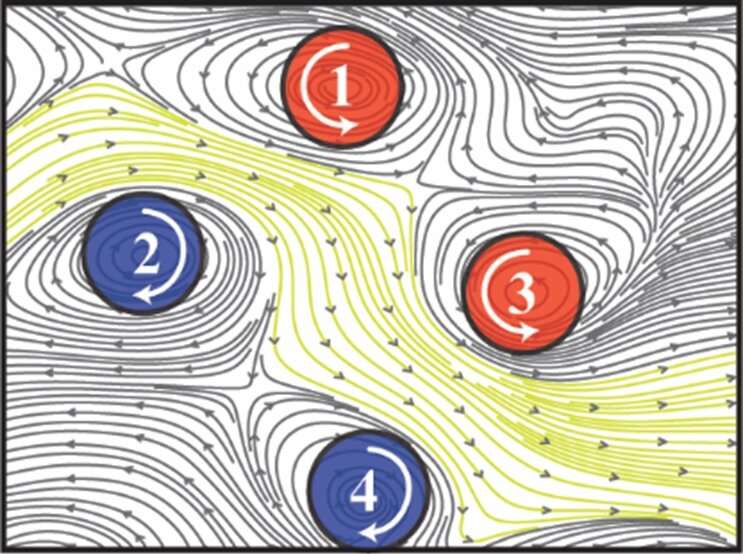This article has been reviewed according to Science X's editorial process and policies. Editors have highlighted the following attributes while ensuring the content's credibility:
fact-checked
peer-reviewed publication
trusted source
proofread
Scientists discover spiral-shaped signals that organize brain activity

University of Sydney and Fudan University scientists have discovered human brain signals traveling across the outer layer of neural tissue that naturally arrange themselves to resemble swirling spirals.
The research, published today in Nature Human Behaviour, indicates these ubiquitous spirals, which are brain signals observed on the cortex during both resting and cognitive states, help organize brain activity and cognitive processing.
Senior author Associate Professor Pulin Gong, from the School of Physics in the Faculty of Science, said the discovery could have the potential to advance powerful computing machines inspired by the intricate workings of the human brain.
The discovery opens up new avenues for understanding how the brain works and provides valuable insights into the fundamental functions of the human brain. It could help medical researchers understand the effects of brain diseases, such as dementia, by examining the role they play.
"Our study suggests that gaining insights into how the spirals are related to cognitive processing could significantly enhance our understanding of the dynamics and functions of the brain," said Associate Professor Gong, who is a member of the Complex Systems research group in Physics.
"These spiral patterns exhibit intricate and complex dynamics, moving across the brain's surface while rotating around central points known as phase singularities."
"Much like vortices act in turbulence, the spirals engage in intricate interactions, playing a crucial role in organizing the brain's complex activities."
"The intricate interactions among multiple co-existing spirals could allow neural computations to be conducted in a distributed and parallel manner, leading to remarkable computational efficiency."
Ph.D. student Yiben Xu, the lead author of the research from the School of Physics, said the location of the spirals on the cortex could allow them to connect activity in different sections, or networks, of the brain—acting as a bridge of communication. Many of the spirals are large enough to cover multiple networks.
The cortex of the brain, also known as the cerebral cortex, is the outermost layer of the brain that is responsible for many complex cognitive functions, including perception, memory, attention, language and consciousness.
"One key characteristic of these brain spirals is that they often emerge at the boundaries that separate different functional networks in the brain," Xu said.
"Through their rotational motion, they effectively coordinate the flow of activity between these networks."
"In our research we observed that these interacting brain spirals allow for flexible reconfiguration of brain activity during various tasks involving natural language processing and working memory, which they achieve by changing their rotational directions."
The scientists gathered their findings from functional magnetic resonance imaging (fMRI) brain scans of 100 young adults, which they analyzed by adapting methods used to understand complex wave patterns in turbulence.
Neuroscience has traditionally focused on interactions between neurons to understand brain function. There is a growing area of science looking at larger processes within the brain to help us understand its mysteries.
"By unraveling the mysteries of brain activity and uncovering the mechanisms governing its coordination, we are moving closer to unlocking the full potential of understanding cognition and brain function," Associate Professor Gong said.
More information: Pulin Gong et al, Interacting spiral wave patterns underlie complex brain dynamics and are related to cognitive processing, Nature Human Behaviour (2023). DOI: 10.1038/s41562-023-01626-5. www.nature.com/articles/s41562-023-01628-3





















